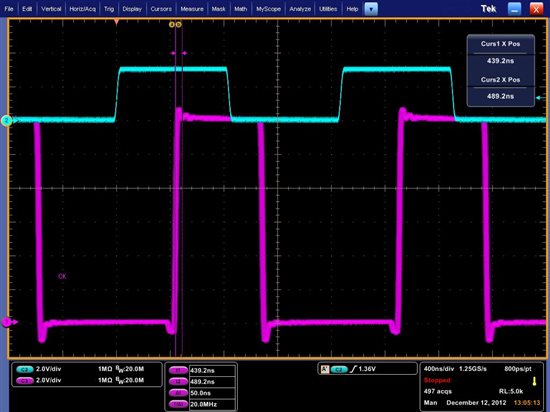I have a question regarding synchronization of the LM20333 to an external clock source. I believe that I have a design that essentially works but there is jitter in the switch node waveform with respect to my external clock source. The circuit moves through its range of duty cycle cleanly and doesn't oscillate. It works both at the free-run frequency of 200kHz and at the sync source's frequency of 600kHz. Finally, it does not oscillate at light load, no load, or max load.
I'm attaching an oscilloscope picture that shows the clock source in blue and the switch node waveform in red. The persistence is all the way up so that the range of the jitter can be seen. It's about 50ns pp.
The circuit is set up as follows:
12V in (nominal)
4.3V out @ 3A max (1.25A load in picture)
L = 10uH
C out = 2 x 100uF X5R ceramic
C comp = 5600p
R comp = 15k
C across R comp and C comp = 47p
I have noticed that if I sweep through a range of clock frequencies by hand I can find some for which the jitter increases and others for which it reduces to practically zero ( 1.2MHz). It seems like it has to be related to the PLL in the device. Is this normal behavior?
Thanks,
Tom Strait

